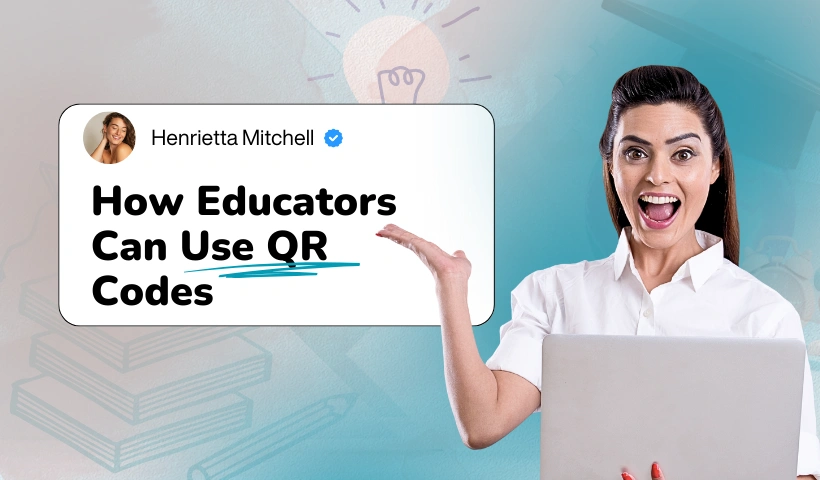In today’s classrooms, technology plays an increasingly important role in engaging students and enriching the learning experience. Among the many digital tools available, QR codes stand out for their simplicity, versatility, and accessibility. These small, scannable codes can connect learners to a wealth of resources and interactive content with just a smartphone or tablet, making them an ideal tool for both traditional and modern teaching environments.
By bridging the gap between printed materials and digital content, QR codes empower educators to create more dynamic lessons that go beyond textbooks. They allow teachers to cater to diverse learning styles, foster student curiosity, and encourage self-directed exploration. Below are some of the most effective ways educators can integrate QR codes into interactive learning.
1. Enhancing Access to Supplementary Materials
Teachers often have a wealth of additional resources—such as videos, articles, and study guides—that can deepen students’ understanding of a topic. Printing web links in handouts or on whiteboards, however, is time-consuming and inconvenient. QR codes offer a simple solution by linking directly to online content, making it easy for students to access supplementary materials instantly.
For example, a history teacher could include QR codes in a worksheet that link to short documentaries or museum archives, while a science instructor might provide codes that connect students to interactive simulations or data sets. This not only saves time in class but also encourages students to extend their learning outside the classroom, creating a richer and more engaging educational journey.
2. Creating Interactive Assignments and Quizzes
QR codes can turn ordinary worksheets into interactive assignments. Educators can embed codes that link to online quizzes, polls, or surveys, allowing students to check their understanding in real-time. This approach not only provides instant feedback but also keeps learners actively involved in the lesson.
Interactive assessments can also help teachers track progress more effectively. By linking QR codes to digital forms or quiz platforms, educators can gather responses quickly, analyse results, and adjust their teaching strategies accordingly. This creates a more personalised learning experience, ensuring that students remain challenged without becoming overwhelmed.
3. Supporting Visual and Audio Learning Styles
Not all students learn best through text. Many benefit from visual or auditory resources, such as diagrams, videos, or audio clips. QR codes make it easy to incorporate these media formats into lessons. For instance, a literature teacher could provide a QR code that plays an audio recording of a poem, while a language instructor might share pronunciation guides or cultural videos.
This multimedia approach can also help students with learning differences. By offering alternative formats, educators make content more inclusive and accessible. QR codes, therefore, can support differentiated instruction, ensuring every student has the opportunity to succeed.
4. Encouraging Independent Research and Exploration
QR codes are also an excellent tool for encouraging self-directed learning. Educators can create scavenger hunts, research projects, or exploratory assignments where students scan codes to uncover clues, resources, or new areas of study. This gamified approach motivates learners to take ownership of their education and develop critical thinking skills.
For example, in a biology class, students might scan QR codes placed around the classroom to access information about different species or ecosystems. In a geography lesson, QR codes could link to interactive maps, satellite images, or virtual tours of landmarks. Such activities bring subjects to life and make learning more memorable.
5. Streamlining Classroom Management and Communication
Beyond academic content, QR codes can also simplify classroom management. Teachers can use them to share timetables, assignment deadlines, or important announcements. Parents and guardians can also benefit, as QR codes on newsletters or homework sheets can link directly to school portals, consent forms, or event details.
This reduces the reliance on paper-based communication and ensures that information is more easily accessible. By streamlining classroom management, QR codes free up more time for teaching and learning, while also improving collaboration between educators, students, and parents.
Conclusion
QR codes are far more than just a technological novelty—they are a practical and versatile tool for enhancing interactivity, accessibility, and engagement in education. By integrating QR codes into lessons, assignments, and communication, teachers can create a more inclusive and dynamic learning environment that caters to diverse student needs.
As education continues to evolve, simple yet effective tools like QR codes can help educators adapt and inspire students in meaningful ways. For institutions seeking to implement QR codes at scale, platforms such as Brevix provide reliable solutions for generating, managing, and tracking QR codes, ensuring that technology works seamlessly in the classroom.


